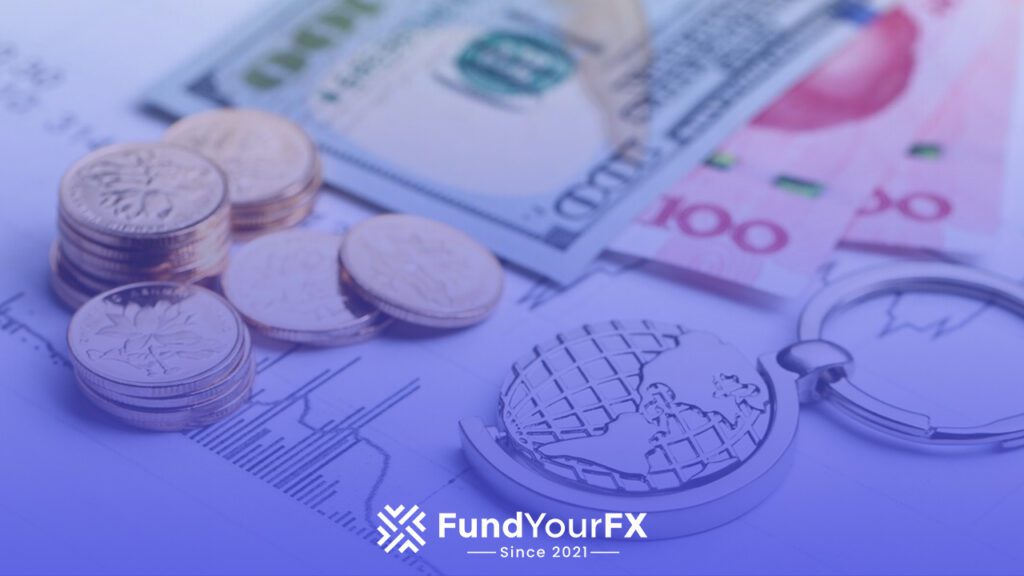As you explore the landscape of global currencies in 2025, you’ll find that the Paraguayan Guarani stands out as the weakest. Its value, hovering around 0.00013 USD, reflects deep-rooted political instability and economic challenges. Understanding the factors that contribute to its frailty can reveal much about broader economic trends. What does this imply for other currencies, and how might this situation evolve?
Overview of the Weakest Currency in the World 2025

As you explore the landscape of global currencies in 2025, you’ll find that the Lebanese Pound (LBP) stands out as the weakest currency in the world, trading at a staggering LBP 85,500 per USD.
This drastic devaluation is rooted in severe economic instability and a protracted financial crisis. Following closely is the Iranian Rial (IRR), struggling under the weight of inflation impact and ongoing economic sanctions, valued at IRR 371,992 per USD.
The Vietnamese Dong (VND) and Laotian Kip (LAK) also reflect weak standings, affected by central bank devaluation strategies and slow growth.
Finally, the Sierra Leonean Leone (SLL) rounds out this list, hindered by high debt. These currencies face challenges in international trade, making financial recovery a formidable task.
The Lebanese Pound: The Weakest Currency
While many currencies face challenges, the Lebanese Pound (LBP) stands out as the weakest in the world, with an alarming exchange rate of approximately LBP 85,500 to 1 USD as of February 2025.
This significant currency depreciation stems from a severe economic crisis, driven by high inflation and ongoing political instability. The inflation impact has dramatically reduced the purchasing power of approximately 5.8 million Lebanese citizens, forcing many into poverty.
Necessary reforms have stalled, leaving the Lebanese economy fragile and vulnerable. Despite these struggles, Lebanon’s rich cultural heritage continues to attract tourism, but the ongoing banking crisis and economic challenges overshadow any potential recovery, further entrenching the LBP’s status as the weakest currency globally.
The Iranian Rial: A Historical Perspective
Although the Iranian Rial’s history is marked by significant turmoil, its decline has accelerated in recent years.
You’ve likely noticed the Rial devaluation trends, especially after the collapse of the US-Iran nuclear deal in 2015. Economic sanctions impact the currency’s stability, while inflationary pressures analysis reveals rates soaring above 40%. This environment has crushed consumer confidence and purchasing power.
Political instability effects, fueled by tensions with Western nations, make recovery even harder. Additionally, the Iranian economy’s oil dependency vulnerability leaves the Rial susceptible to fluctuations in global oil prices.
Without a diversified economic strategy, the Rial’s future remains bleak, further entrenching its position as one of the weakest currencies in the world.
The Vietnamese Dong and Its Challenges
Despite Vietnam’s rapid economic growth, the Vietnamese Dong (VND) faces significant challenges that hinder its stability in the global market. The VND devaluation impacts are evident, especially with foreign expert restrictions limiting investment and expertise.
As Vietnam evolves from a centralized to a market economy, the government’s economic reform initiatives aim to stabilize the currency and promote growth. However, these changes come with hurdles, including maintaining confidence in the VND amidst fluctuating exchange rates, currently around 24,129 VND per USD.
On a positive note, tourism resilience strategies help cushion the economy, as Vietnam’s stunning scenery and low cost of living continue to attract visitors. These factors will be essential in determining the future strength of the VND.
The Laotian Kip: Economic Factors at Play
As the Vietnamese Dong grapples with its own set of challenges, the Laotian Kip faces a different but equally intimidating economic landscape.
Currency depreciation causes, like high inflation and slow economic growth, have severely impacted the Kip’s value. Laos’s heavy reliance on agriculture and limited industrialization hinder its economic growth strategies, making it tough to diversify and attract foreign investment.
The landlocked geography complicates trade opportunities, further weakening the Kip. However, there are efforts to implement inflation control measures and improve infrastructure, aiming to bolster economic growth and entice foreign investors.
These initiatives could eventually help stabilize the Laotian Kip, but overcoming agricultural reliance issues remains a significant challenge in this economic environment.
The Sierra Leonean Leone: Navigating Financial Struggles
While the Sierra Leonean Leone (SLL) struggles to maintain its value, it faces a myriad of financial challenges that reflect the country’s broader economic issues. The currency depreciation impacts daily life, with inflationary pressures analysis showing rising prices that outpace wages.
You’ll notice agricultural economy challenges, as reliance on farming isn’t enough to lift many from widespread poverty. Political instability effects also hang over the economy, stalling necessary reforms and foreign investment.
Recovery strategies discussion is essential, focusing on improving infrastructure and governance to stabilize the Leone. Although efforts are underway to boost the economy, the road ahead remains difficult, with many feeling the weight of these persistent financial struggles.
The Indonesian Rupiah: A Currency in Transition
Though the Indonesian Rupiah (IDR) has faced persistent challenges, it remains a currency in flux as it grapples with issues of stability and value.
Currently, the IDR struggles against various currency trends, reflecting its vulnerability to global market shifts. Economic policies intended to bolster the Rupiah have shown limited success, largely due to decreasing foreign investments and export dependencies on commodities like palm oil and minerals.
These fluctuations considerably impact its strength. In addition, political stability plays an essential role in shaping investor confidence, which is critical for future growth. As you observe the Rupiah’s journey, keep in mind that its path to recovery hinges on effective reforms and a stable political landscape.
The Uzbek Som: Current Economic Status
Despite ongoing economic reforms, the Uzbekistani Som (UZS) continues to grapple with significant devaluation and instability. As of March 2025, the som’s exchange rate is approximately 1 INR = 151 UZS. This situation raises concerns about the future of Uzbekistan’s economy.
Key factors affecting the UZS include:
- Investor confidence: Political instability and corruption have historically deterred foreign investments.
- *Export reliance: The economy’s dependence on export markets makes it vulnerable to commodity price fluctuations.
- Pandemic impact: Covid-19 has further complicated Uzbekistan’s economic performance, leading to uncertainty about the som’s strength.
While reforms aim to stabilize the economy, the challenges of currency devaluation persist, leaving many apprehensive about the Uzbek som’s future.
The Guinean Franc: Understanding Its Value
Understanding the value of the Guinean Franc (GNF) is essential, especially as it ranks among the weakest currencies globally. The GNF’s exchange rate, approximately 0.00012 USD, reflects significant currency fluctuation effects tied to political instability and corruption.
Economic policy implications are critical; decision-makers need to address these issues to stabilize the currency. Additionally, inflation rate analysis reveals pressing challenges that impact everyday life.
You might consider how these economic factors influence cultural impacts assessment in Guinea, where rich heritage and culinary traditions like Riz gras endure despite hardships. By examining exchange rate trends, you can better grasp the ongoing struggles of the Guinean economy and the resilience of its people amidst these challenges.
The Paraguayan Guarani: Economic Insights

As Paraguay navigates its economic landscape, the Paraguayan Guarani (PYG) stands out as one of the weakest currencies globally, trading at about 0.00013 USD per unit. Several factors contribute to this situation:
- Guarani depreciation causes: Political instability and corruption hinder growth.
- Agricultural reliance issues: A lack of diversification makes the economy vulnerable.
- Currency stabilization strategies: The government needs effective measures to regain investor confidence.
These Paraguay economic challenges reflect ongoing struggles that impact daily life. nAnalyzing the political impact reveals how governance directly affects economic stability.
As you consider the Guarani’s future, understanding these interconnected issues will be essential for grasping the broader economic narrative of Paraguay.
Conclusion
In 2025, the Paraguayan Guarani stands out as the weakest currency globally, reflecting deep-rooted political instability and economic challenges. Its value, trading at just 0.00013 USD, underscores the urgent need for effective governance and consistent policies. If Paraguay can stabilize its political landscape and diversify its economy beyond agriculture, there’s hope for restoring investor confidence and improving the Guarani’s standing. A collective effort towards reform could pave the way for a stronger financial future.







